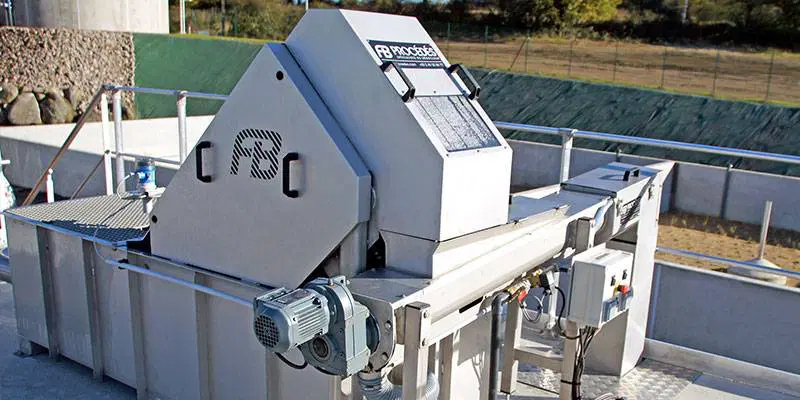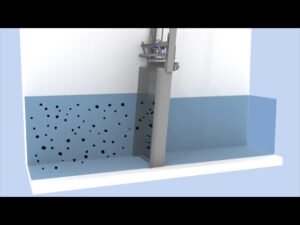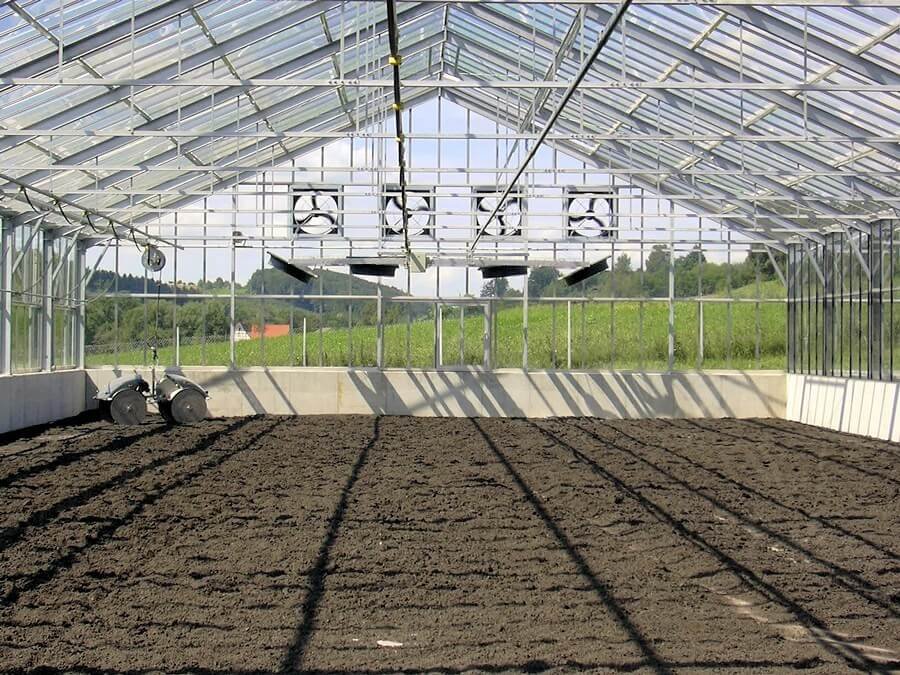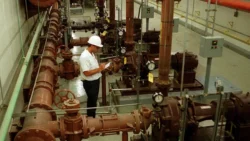Bar Screening for Wastewater Treatment

In wastewater treatment, bar screens play a pivotal role in protecting essential processing equipment from damage and obstruction by efficiently filtering out large solids from the wastewater stream. These devices, typically installed at the headworks of a treatment plant, are the first line of defense, ensuring that subsequent processes can operate smoothly and effectively. As environmental regulations become more stringent and the push for cleaner waterways intensifies, the need for reliable and efficient bar screens has never been more prominent.
Selecting the right bar screen product is crucial. The market offers a variety of options, each designed to cater to different treatment capacities, load types, and maintenance considerations. Prominent brands specialize in optimizing flow conditions, resisting wear and corrosion, and reducing the manual labor involved in cleaning. It’s essential to assess a wastewater treatment facility’s specific conditions and requirements before making a decision.
Engineering advancements and innovative designs in wastewater screens have led to significant improvements in durability and performance. Automated cleaning mechanisms, advanced materials, and intelligent control systems contribute to the enhanced functionality of modern bar screens. As the industry evolves, these products will continue to set the standard for preliminary wastewater treatment across municipal and industrial applications.
Importance of Coarse Screens in Wastewater Treatment Plants
Wastewater treatment is a critical process that entails removing pollutants from water before they are released into the environment. A vital component of this intricate system is the effective screening of solids at the initial stage, known as the headworks.
Bar screens are essential in protecting the intricate processes of wastewater treatment plants. Coarse screens are a screening system used as the first stage of wastewater treatment to remove oversized materials and debris from raw sewage flows entering a treatment plant. Positioned at the headworks, they play a pivotal role by capturing large solids that could damage equipment or hinder subsequent treatment stages. The effectiveness of bar screens directly influences the overall filtration and, thus, the operation and maintenance costs of a treatment plant.
Wastewater Treatment Process Basics
The wastewater treatment process typically starts with pretreatment, where bar screens removepretreatment as rags, sticks, and other large objects. Following this, the wastewater enters a series of treatment phases, including primary, secondary, and sometimes tertiary treatment. Each phase methodically reduces the levels of different pollutants. The primary treatment phase settles out solids, while secondary treatment uses biological processes to degrade dissolved organic substances. In some cases, tertiary treatment removes specific contaminants to meet higher environmental standards. Throughout these stages, bar screens and other mechanisms ensure the integrity and efficiency of treatment processes.
Types of Bar Screens
Bar screens are essential components in wastewater treatment, used to remove large solids from the water to protect pumps and other downstream processes. Accurate selection and proper use of the appropriate type of bar screen can significantly enhance the efficiency and effectiveness of a wastewater treatment facility.
Manual Bar Screens
Manual bar screens require operators to remove the captured materials physically. They are typically used in smaller or less mechanized facilities. The structure consists of a grid of bars placed at a specific angle to catch debris. Although labor-intensive, manual bar screens are cost-effective solutions for locations with low flow rates.
Mechanical Bar Screens
Mechanical screens are employed in more extensive facilities to manage higher flow rates efficiently efficiently. They operate via a motor-driven mechanism that automates the cleaning of the screen, reducing the physical labor required. These screens are designed to accommodate various bar spacings to target specific types of debris, and they play a pivotal role in protecting the downstream components from potential damage.
Automatic Bar Screens
Automatic bar screens represent the advanced end of screening technology. They are fully automated systems that capture debris and wash, compact, and dispose of it with minimal human intervention. These screens are essential for high-flow, high-load environments where reliability and efficiency are paramount. Automatic mechanisms optimize the cleaning cycle frequency and adjust to changing wastewater flow conditions.
Using the right bar screen technology ensures that wastewater treatment plants operate effectively while minimizing maintenance requirements and protecting the environment.
Selection Criteria for Bar Screens
Selecting the right bar screen for wastewater treatment hinges on key characteristics: material durability, efficiency in capture rate, and the variety of design and customization options.
Materials and Durability
Bar screens must resist corrosion and wear, making stainless steel a preferred choice for construction due to its durability and longevity. The bar spacing and screening surface area are critical factors impacting durability and maintenance requirements. Ensuring that the material can withstand the conditions of the channel widths and varying inlet works configuration without degrading is essential.
Capture Rate and Efficiency
The capture rate is a vital performance metric for bar screens. A higher rate ensures fewer solids pass through, enhancing the treatment process. Aspects such as bar spacing and screening surface area play a part in optimizing the capture rate. Additionally, head loss and screening compaction are essential to evaluate efficiency; minimal head loss should be balanced with effective volume reduction of screenings to reduce downstream processing and disposal costs.
Design and Customization Options
Flexibility in design and customization caters to specific treatment plant needs. Adjustable channel opening sizes and varied bar screen configurations accommodate diverse channel conditions. Customization also extends to the operating method, which can be manual, semi-automatic, or fully automatic, affecting operational complexity and labor costs.
Best Bar Screening Manufacturers & Brands
When selecting bar screens for wastewater treatment, the choice of brand can significantly impact performance and reliability.
Huber Technology
Huber’s TrashMax® line includes curved bar Huber’s for fine screening and multi-rake and step screens. Their BoogieMax® uses a spiral scoop mechanism to compact and dewater screenings. Q-Press® further reduces screening volume.
Franklin Miller
The TASKMASTER® range features the MaxFloTM parabolic screen for superior fine solids capture. Also, provide the punch plate screen, Multi-Rake, and Multi-Basket screens suited for high flows and heavy debris loads. Screening washing/compacting equipment as well.
Parkson
The Raptor® stainless steel screens come in curved, multi-rake, and step configurations. Options include the Raptor® WashPress for screenings, washing, and compaction to capture organics and reduce volume.
JWC Environmental
Their FINESCREEN® product is an internally fed, parabolic fine screen using a vertical lift mechanism to achieve excellent openings down to 0.25mm while maintaining high capture rates.
Vulcan Industries
Vulcan Industries has been supplying a variety of wastewater screening equipment since 1975. They offer long-lasting, efficient bar screens for water supply and protection in over 900 cities worldwide.
WesTech
WesTech’s FullFloTM line employs state-of-the-art tWesTech’ssmooth operation. Offerings include the FullFloTM Mechanical Bar Screen, Micro Strainer Screen, Multi-Rake Screen, and more.
World Water Works
Their SpiraGrit vortex separator removes grit, while the Microband is a compact fine screen. Both feature ultra-low headloss proprietary designs. Multiple configurations and easy access arrangements suit retrofits.
Lakeside
Lakeside’s equipment includes CSC and SpiraGrit vorLakeside’stors, Arc and Micro Strainer Screens and WAScreen for septage, with sizes from 12″ to over 108” channels. Rakes and wash presses are ava”lable to han”le debris volumes.
Duperon
The FlexRake and FlexPen options feature low-profile installation. With no submerged bearings, easy visual inspection, and precision screening from 3mm to 150mm openings, Duperon simplifies operation and maintenance.
Spiral
It provides high capture and low head loss screening, which is ideal for power plants and challenging debris loads. Products include the SpiraWedge Wire Screen, TechnoFilter travel band fine screen, and upflow screening alternatives.
Headworks International
With over two decades of experience, Headworks International is known for its high-quality bar screens utilized in water and wastewater treatment plants across the globe
Evoqua
This company offers a variety of bar screens that cater to the wastewater treatment needs of municipalities and industries worldwide. Their products are known for their durability, low maintenance requirements, and energy efficiency.
Here is a comparison of some of the brands we have mentioned.
| Company | Screen Type | Bar Spacing Range | Channel Widths | Screening Area | Head Loss | Operating Model | Applications Best Suited For | Product Page URL |
|---|---|---|---|---|---|---|---|---|
| Huber | TrashMax® Curved Bar Screen | 2-100 mm | 16-157 inches | 46-596 ft2 | < 0.5 ft at max flow | Mechanical, Self-Cleaning | Fine Solids Removal, High Flows | Huber Product Page |
| Franklin Miller | MaxFloTM Bar Screen | 1.5-16 mm slots | 12-240 inches | 84-1,176 ft2 | 0.3-3.0 inches | Mechanical, Self-Cleaning | Fine Screening, Tight Spacings | Franklin Miller Product Page |
| Parkson | Raptor® Multi-Rake Bar Screen | 3-30 mm | 16-240 inches | 143-3,348 ft2 | 6-39 inches | Mechanical, Self-Cleaning | Heavier Debris Loads, Larger Openings | Parkson Product Page |
| JWC | FINESCREEN® | 0.25-6 mm slots | 12-168 inches | 67-1,292 ft2 | 0.2-1.2 inches | Mechanical, Self-Cleaning | Very Fine Screening | JWC Environmental Product Page |
| WesTech | FullFloTM Mechanical Bar Screen | 3-100 mm | 18-240 inches | 60-1,200 ft2 | 4-12 inches | Mechanical, Self-Cleaning | Primary Screening Stage | WesTech Product Page |
| World Water Works | SpiraGrit Vortex Grit Separator | 3-10 mm slots | 16-144 inches | 188-1,300 ft2 | < 0.5 ft at max flow | Vortex, Self-Cleaning | Combined Grit Removal & Screening | World Water Works Product Page |
Proper Installation Practices
One must follow manufacturer guidelines precisely to protect the integrity of the bar screen system. They must ensure the bar screen is correctly aligned and the frame is fixed securely to avoid any damage during operation. The electrical connections, if any, should be watertight to prevent short-circuiting. They must check that the screen is level, as an imbalance could cause uneven wear and tear or operational failures. it’stionally, it’s imperative to consider factors like peak flow rates and the size of solids typically encountered to select an appropriate bar screen size and design.
Routine Maintenance and Cleaning
Regular maintenance of bar screens is essential. The person responsible should visually inspect screens for signs of wear, such as cracks or corrosion, and replace worn parts promptly. Routine cleaning schedules must be adhered to to remove all collected debris; this helps maintain efficiency and prevent backups. Dependiscreen’se bar screen’s design, they may use manual methods or automated cleaning mechanisms to escreen’se bar screen’s functionality is not compromised. Precise tracking and documentation of maintenance activities will also aid in identifying trends and potential issues before they become significant problems.
Ancillary Equipment and Systems
Ancillary equipment plays a crucial role in enhancing the efficiency of bar screens in wastewater treatment plants. They not only assist in the handling and processing of screenings but also ensure the seamless functioning of the overall wastewater management system.
Conveyor Systems
Conveyor systems are integral to moving screenings from the bar screens to disposal or further processing areas. They are designed to handle a variety of materials, including wet and dry solids, and come in configurations such as screw conveyors or belt conveyors. Screw conveyors are often favored for their compact design and efficiency in transporting materials at an incline. On the other hand, Belt conveyors are versatile and can cover longer distances but require careful design considerations to prevent spillage and ensure the continuous flow of screenings.
Screenings Washing Systems
The screening washing systems are essential in processing debris removed by the bar screens. They work not only to reduce volume but also to minimize odors and the potential for pathogen growth. These systems effectively separate organics from inorganics, returning valuable biomass to the treatment process while preparing inorganic materials, such as plastics or grit, for disposal. This separation is vital to enhance overall plant operations and to comply with environmental regulations regarding solid waste.
Grit Removal Systems
Effective grit removal systems protect downstream processing equipment from abrasive wear. Typically deployed after the bar screens, these systems aim to eliminate grit—comprised of sand, gravel, and other heavy materials—that could hinder subsequent treatment processes. Grit removal is critical to prevent sedimentation in channels, basins, and digesters. It also plays a part in optimizing the disinfection process, as excess grit can shield pathogens and reduce the efficacy of disinfectants. There are various types of grit removal systems, including aerated grit chambers and vortex separators, which are selected based on the specific needs and constraints of the treatment facility.
Challenges in Bar Screening
Bar screens play a critical role in wastewater treatment by removing large solids and debris before they can cause damage or inefficiencies in downstream processes. However, they encounter several challenges that can affect their performance and reliability.
Handling Large Solids and Debris
Bar screens are designed to intercept large solids and debris, such as branches, leaves, and trash, found in wastewater. These materials can vary significantly in size and shape, making it difficult to capture and remove them effectively without causing a blockage. Some bar screens employ mechanical elements to remove these materials actively, but unusually large or bulky items can compromise the efficiency of these systems.
Bar Screen Clogging and Ragging
Clogging is a common issue where solids and rags accumulate on the screening elements, reducing flow through the bar screen. This can result in increased headloss and potential overflow of untreated wastewater. Ragging refers explicitly to the entanglement of fibrous materials, such as wet wipes and stringy organic matter, which can create maintenance challenges and necessitate frequent cleanings to restore function.
Operational and Environmental Considerations
The operation of bar screens must also take into account their environmental impact. Issues such as the handling and disposal of screenings, which can include a mix of organic matter, solid objects, and sometimes oil, must be managed in an environmentally responsible manner. Additionally, ensuring the machinery operates smoothly and efficiently requires regular maintenance to prevent issues such as corrosion or wear from the abrasive nature of the wastewater, as well as to ensure that energy consumption is kept to a minimum.
Technological Innovations in Screening
Recent years have seen a shift in wastewater treatment technologies, with screening products embracing increased automation and sophisticated design to enhance efficiency and reliability.
Advancements in Automation
Automation has taken center stage in the evolution of screening processes for wastewater treatment. Products such as continuous belt screens and climber screens have integrated automated features that reduce the need for manual supervision. They now boast sensors and programmable logic controllers that enable them to adapt to waste flow and composition variations. For example, the reciprocating rake, traditionally requiring human monitoring, now often includes automated clearing cycles, adjusting its operation in response to debris load.
Improvements in Screen Design
The design of bar screens has evolved to meet the demands of modern wastewater management. A critical development is the advent of the chain-drive mechanism, which offers enhanced durability and reduces maintenance requirements. Additionally, catenary screens, identified by their hangindoesn’tn that doesn’t rely on sprockets or bearings submerged in the effluent, have pioneered material and operational longevity improvements. Screen designs also consider factors such as spacing and material to prevent clogs and maintain a consistent flow, ensuring that the system operates smoothly and effectively even during heavy debris conditions.
Case Studies and Best Practices
The effectiveness of bar screens in wastewater treatment has been proven through various case studies and adopted best practices. These success stories exemplify the impact on municipal water systems and industrial applications.
Municipal Wastewater Treatment Success Stories
Municipal wastewater treatment plants often face challenges related to high solid waste loads that can cause damage to downstream equipment. Bar screens have become critical components for protecting pumps and other machinery in these plants. For instance, a large municipal treatment facility reduced equipment failure and maintenance time significantly by upgrading to an advanced bar screen system designed for heavy-duty waste separation. This proactive approach not only extended the lifespan of subsequent equipment but also improved the overall efficiency of the water treatment process.
Industrial Applications of Bar Screens
In the industrial sector, the deployment of bar screens is equally essential. Mainly, food processing facilities generate substantial organic waste pretreatment pre-treatment before entering the water system. A notable case is a meat processing plant that installed a customized bar screen to intercept larger solids and reduce the burden on their wastewater treatment infrastructure. The result was a marked decrease in contaminants and smoother operation of the treatment plant. This adoption showcases how tailored bar screen solutions can meet specific industrial needs while complying with environmental regulations.
Frequently Asked Questions
How does a manual bar screen operate in wastewater treatment?
A manual bar screen functions by physically trapping solids on bar racks as wastewater flows through. Workers then manually clean the collected debris at intervals, making it a labor-intensive process in smaller or less automated facilities.
What are the advantages of chain and rake bar screens over other types?
Chain and rake bar screens are designed for automatic operation, which reduces the need for manual labor. Their mechanical raking action efficiently removes debris, the operation is continuous, and they can handle heavy loads, increasing operational reliability and reducing downtime.
In what scenarios is a climber bar screen most effective?
A climber bar screen is most effective in deep channels and limited-space environments with less horizontal space. It operates by lifting debris from the wastewater using a series of rakes attached to a rotating chain.
How do bar screens contribute to the overall efficiency of sewage treatment plants?
Bar screens are crucial in protecting downstream equipment from large solids and reducing maintenance. Removing debris early in the process prevents clogging and damage to pumps and other apparatus, thus contributing to sewage treatment plants' overall efficiency and longevity.
What should one consider when choosing a bar screen for wastewater treatment?
When choosing a bar screen, one should consider the screen's design for the depth and width of the channel, the type and amount of debris to be removed, maintenance requirements, and the compatibility of the screen with the rest of the facility's processes.



